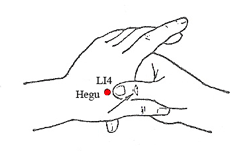Planning a pregnancy is an exciting time but is also fraught with anxiety and fear, especially if it is your first pregnancy. The changes your body undergoes are exhilarating but also frightening. Experiencing vaginal bleeding and cramping in early pregnancy, even though it is only spotting, may fill you with concern. Other women may experience the spotting/ bleeding and cramping but may not even know they are pregnant. How much bleeding and cramping is normal in the early days of pregnancy?
What Do Implantation Bleeding and Cramps Mean?
Mild cramping and slight bleeding can be the first signs of being pregnant and is quite normal for many women. Implantation occurs about 8-10 days after ovulation when the fertilised egg embeds and burrows into the walls of the uterus. When this implantation takes place, a small part of the uterine wall is shed. This causes slight cramping which can be accompanied by some vaginal spotting.
The pain can resemble mild menstrual cramps and can be felt on the lower abdomen. Many times, the spotting may cease but the cramping continues. Implantation bleeding usually occurs a week before your expected period. The spotting may be either light pink or dark brown drops of blood. It was found that only between 25%-30% of women experience implantation bleeding. Many of them don’t even notice this slight spotting.
There are other causes of bleeding and cramping and some of them can be serious. The causes include:
- A chemical pregnancy which is an early miscarriage.
- Ectopic pregnancy, although rare, occurs when implantation of the embryo is outside the uterus. The pain is usually felt on one side of the pelvis and accompanied with dizziness and neck/shoulder pain.
- Miscarriage will cause spotting and cramping more severe than normal menstrual cramps. It is usually accompanied by a lower backache.
- Hormonal changes of early pregnancy can lead to cramps.
- Round ligament pain can either be a sharp pain or a dull ache. The cramps may also be attributed to the uterus expanding in preparation for the growing foetus. Typically, this is experienced by the 4-6th month of pregnancy when the baby is larger.
- Constipation and excessive abdominal gas: high levels of pregnancy hormones slow down digestion to cause constipation and higher-than-normal levels of gas in the intestines. Gas-related pains can be sharp but disappear as soon as you pass the gas.
How Long Do They Last and What Can You Do?
The durationof implantation bleeding and cramps is a good indication of whether you are pregnant or merely beginning your menstrual period. A longer duration of spotting (more than 3 days) can mean you have your period.However, remember that different women experience a different duration of spotting and cramping in a normal, early pregnancy. It can occur sporadically for 1-2 days or for even a few hours on a single day. Spotting could literally just only be a single spot of blood. If the spotting occurs for longer than 2 days, it may indicate a serious problem like an ectopic pregnancy.
However, if you know or strongly suspect you are pregnant, see your doctor to rule out complications. You can try the following tips to alleviate the implantation cramps:
- Sipping warm water while cramping occurs.
- Mild exercise like walking, Kegel exercises and pelvic tilts will strengthen pelvic and abdominal muscles.
- Resting or a warm bath can soothe light cramping of early pregnancy.
- Using warm or cold compresses and massage can also provide relief.
- Avoid any medications in this crucial stage of your baby’s development. If the pain is so severe that you feel you require medication, consult your doctor.
Contact Your Doctor When:
- You experience severe pain, especially on one side of your abdomen.
- The spotting gets worse and is accompanied by severe cramps.
- Bleeding increases.
- Clots appear in the vaginal discharge.
Other Mums' Experiences on Implantation Bleeding and Cramps
It is important to remember that some women do experience atypical implantation bleeding and cramping, as described in the following experiences:
I had severe cramping for approximately one week and bleeding with bright red blood. An ultrasound and doctor’s visit confirmed that it was only implantation bleeding and cramping.
During my first pregnancy, I mistook my implantation bleeding for my period and only discovered my pregnancy at 6 weeks. The cramping I experienced later turned out to be due to dehydration.
I thought the cramps and bleeding were the start of my period. The cramping and spotting lasted over one week. Then I took a pregnancy test and the result was positive!
I'm a mother of two and I experienced implantation bleeding and cramps with both of my babies. I took Advil for the pain and even used a tampon for the bleeding. The implantation bleeding looked like a start of a normal period for me but the bleeding never got heavy or turned red. The duration was about two days and thereafter the bleeding and cramping stopped.






